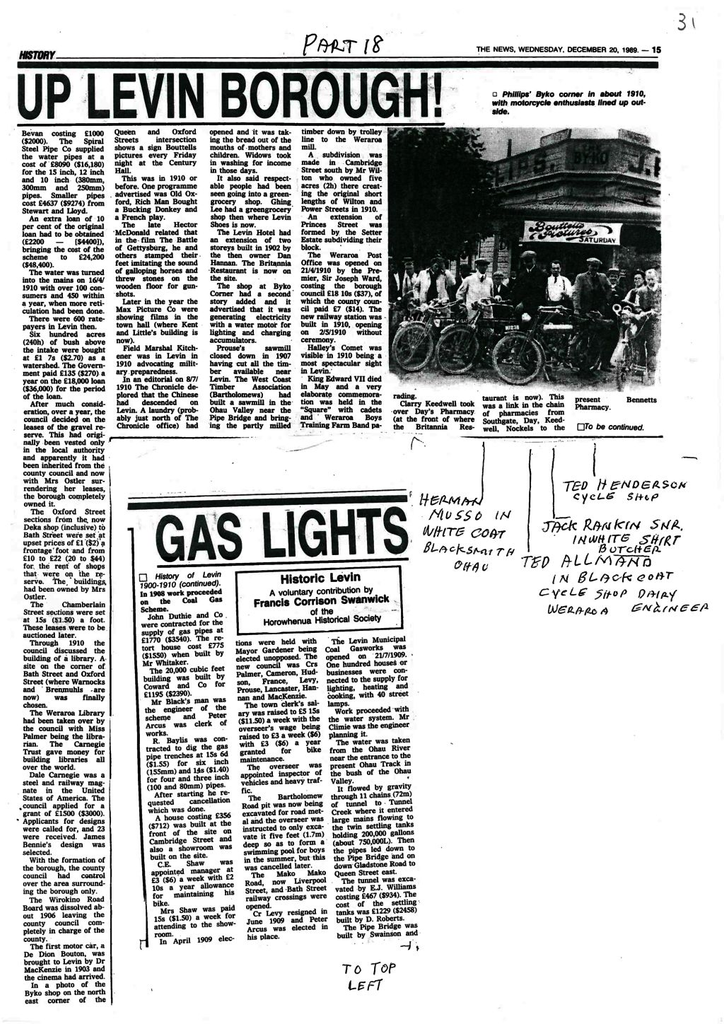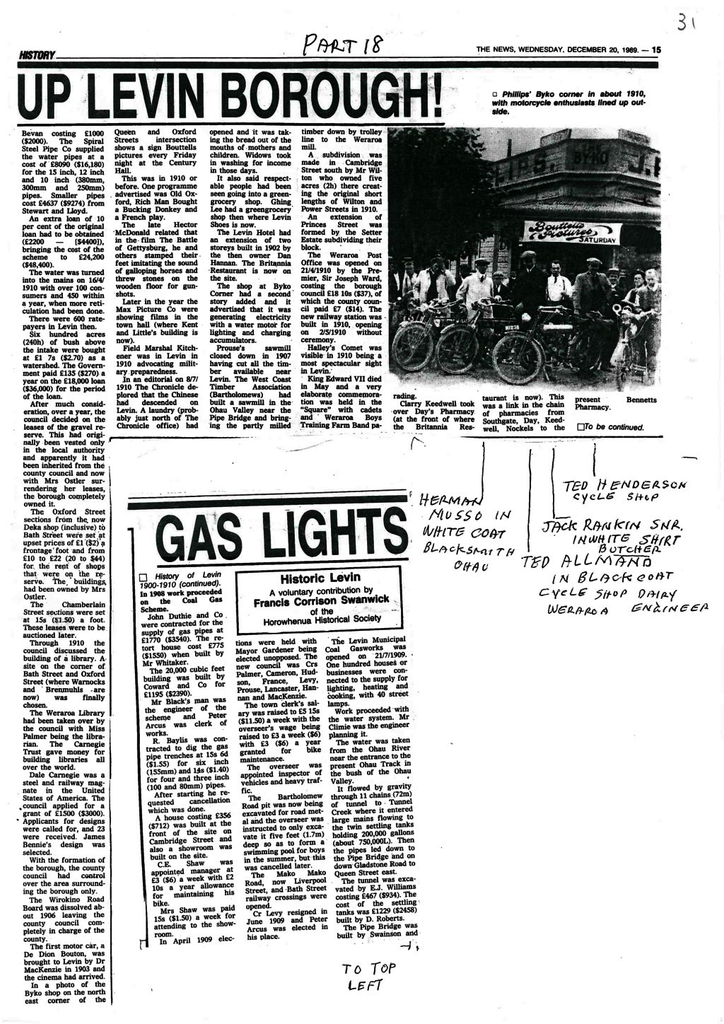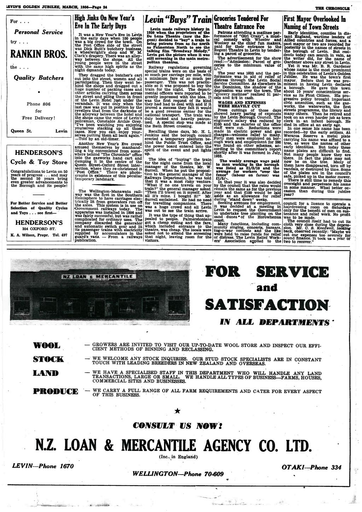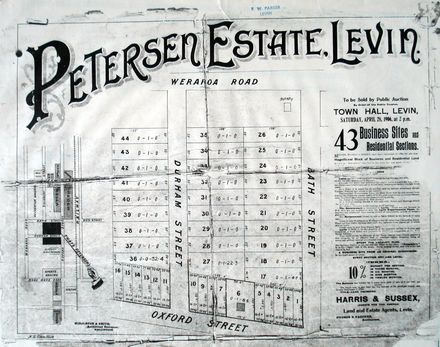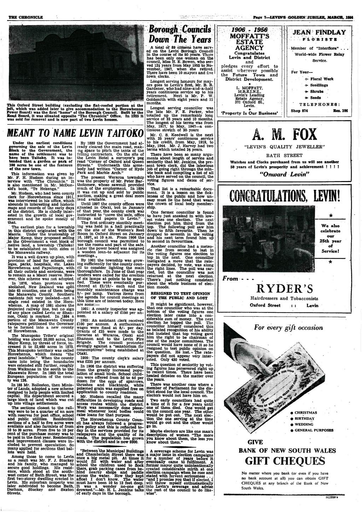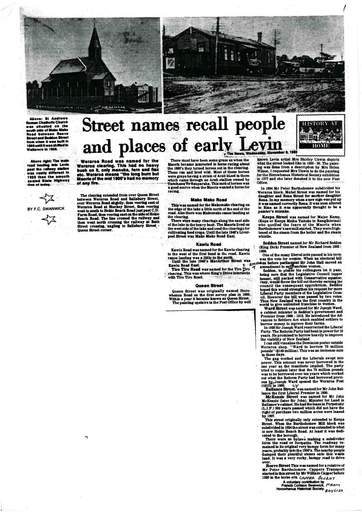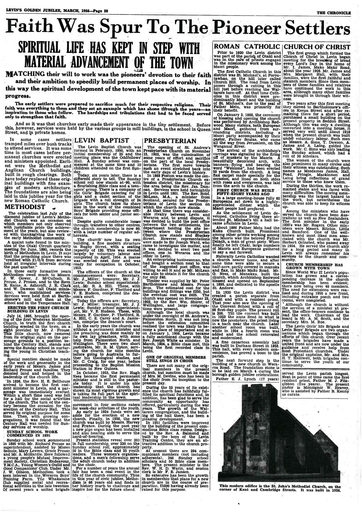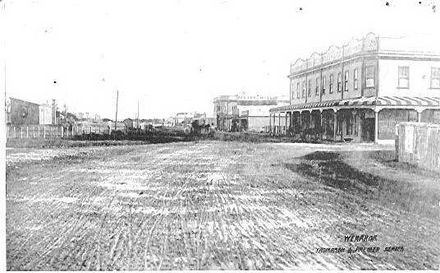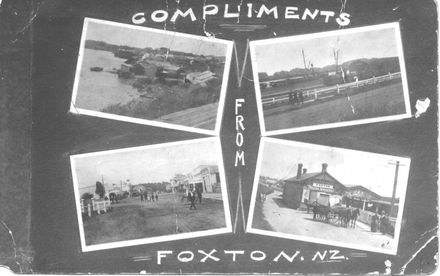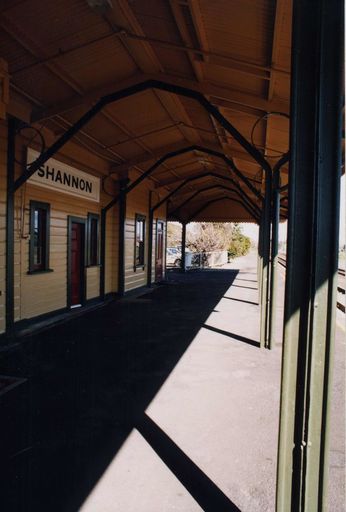Gas Lights up Levin Borough
- Description
In 1908 work proceeded on the Coal Gas Scheme.
John Duthie and Co was contracted for the supply of gas pipes at £1770 ($3540). The retort house cost £775 ($1550) when built by Mr Whitaker. The 20,000 cubic feet building was built by Coward and Co for £1195 ($2390). Mr Black’s man was the engineer of the scheme and Peter Arcus was clerk of works.
R.Baylis was contracted to dig the gas pipe trenches at 15s 6d ($1.55) for six inch (155mm) and 14s ($1.40) for four and three inch 100 and 80mm pipes. After starting he requested cancellation which was done.
A house costing £356 ($712) was built at the front of the site on Cambridge Street and also a showroom was built on the site. C.E. Shaw was appointed manager at £3 ($6) a week with £2.10s a year allowance for maintaining his bike. Mrs Shaw was paid 15s ($1.50) a week for attending to the showroom.
In April 1909 elections were held with Mayor Gardener being elected unopposed. The new council was Crs Palmer, Cameron, Hudson, France, Levy, Prouse, Lancaster, Hannan and MacKenzie.
The town clerk’s salary was raised to £5.15s ($11.50) a week with the overseer’s wage being raised to £3 ($6) a week with £3 ($6) a year granted for bike maintenance. The overseer was appointed inspector of vehicles and heavy traffic.
The Bartholomew Road pit was now being excavated for road metal and the overseer was instructed to only excavate it five feet (1.7m) deep so as to form a swimming pool for boys in the summer, but this was cancelled later.
The Mako Mako Road, now Liverpool Street, and Bath Street railway crossings were opened.
Cr Levy resigned in June 1909 and Peter Arcus was elected in his place.
The Levin Municipal Coal Gasworks was opened on 21/7/1909. One hundred houses or businesses were connected to the supply for lighting, heating and cooking, with 40 street lamps.
Work proceeded with the water system. Mr Climie was the engineer planning it. The water was taken from the Ohau River near the entrance to the present Ohau Track in the bush of the Ohau Valley. It flowed by gravity through 11 chains (72m) of tunnel to Tunnel Creek where it entered large mains flowing to the twin settling tanks holding 200,000 gallons (about 750,000L). Then the pipes led down to the Pipe Bridge and on down Gladstone Road to Queen Street east.
The tunnel was excavated by E.J. Williams costing £467 ($934). The cost of the settling tanks was £1229 ($2458) built by D. Roberts.
The Pipe Bridge was built by Swainson and Bevan costing £1000 ($2000). The Spiral Steel Pipe Co supplied the water pipes at a cost of £8090 ($16,180) for the 15 inch (380mm, 300mm and 250mm) pipes. Smaller pipes cost £4637 ($9274) from Stewart and Lloyd.
An extra loan of 10% of the original loan had to be obtained £2200 ($4400), bringing the cost of the scheme to £24,200 ($48,400). The water was turned into the mains on 16/4/1910 with over 100 consumers and 450 within a year, when more reticulation had been done. There were 600 rate-payers in Levin then.
Six hundred acres (240h) of bush above the intake were bought at £1.7s ($2.70) as a watershed. The Government paid £135 ($270) a year on the £18,000 loan ($36,000) for the period of the loan.
After much consideration, over a year, the council decided on the leases of the gravel reserve. This had originally been vested only in the local authority and apparently it had been inherited from the county council and now with Mrs Ostler surrendering her leases, the borough completely owned it.
The Oxford Street sections from the now Deka shop (inclusive) to Bath Street were set at upset prices of £1 ($2) a frontage foot and from £10 to £22 (20 to $44) for the rent of shops that were on the reserve. The buildings had been owned by Mrs Ostler.
The Chamberlain Street section were set at 15s ($1.50) a foot. These leases were to be auctioned later.
Through 1910 the council discussed the building of a library. A site on the corner of Bath Street and Oxford Street (where Warnocks and Brenmuhls are now) was finally chosen. The Weraroa Library had been taken over by the council with Miss Palmer being the librarian. The Carnegie Trust gave money for building libraries all over the world.
Dale Carnegie was a steel and railway magnate in the United States of America. The council applied for a grant of £1500 ($3000). Applicants for designs were called for, and 23 were received. James Bennie’s design was selected.
With the formation of the borough, the county council had control over the area surrounding the borough only. The Whirokino Road Board was dissolved about 1906 leaving the county council completely in charge of the county.
The first motor car, a De Dion Bouton, was brought to Levin by Dr MacKenzie in 1903 and the cinema had arrived.
In a photo of the Byko shop on the north east corner of the Queen and Oxford Streets intersection shows a sign Bouttells pictures every Friday night at the Century Hall. This was in 1910 or before. One programme advertised was Old Oxford, Rich Man Bought a Bucking Donkey and a French play. The late Hector McDonald related that in the film The Battle of Gettysburg, he and others stamped their feet imitating the sound of galloping horses and threw stones on the wooden floor for gunshots. Later in the year the Max Picture Co was showing films in the town hall (where Kent and Little’s building is now).
Field Marshal Kitchener was in Levin in 1910 advocating military preparedness.
In an editorial on 8/7/1910 The Chronicle deplored that the Chinese had descended on Levin. A laundry (probably just north of The Chronicle office) had opened and it was taking the bread out of the mouths of mothers and children. Widows took in washing for income in those days.
It also said respectable people had been seen going into a greengrocery shop. Ghing Lee had a greengrocery shop then where Levin Shoes is now.
The Levin Hotel had an extension of two storeys built in 1902 by the then owner Dan Hannan. The Britannia Restaurant is now on the site.
The shop at Byko Corner had a second storey added and it advertised that it was generating electricity with a water motor for lighting and charging accumulators.
Prouse’s sawmill closed down in 1907 having cut all the timber available near Levin. The West Coast Timber Association (Bartholomews) had built a sawmill in the Ohau Valley near the Pipe Bridge and was bringing the partly milled timber down by trolley line to the Weraroa mill.
A subdivision was made in Cambridge Street south by Mr Wilton who owned five acres (2h) there, creating the original short lengths of Wilton and Power Streets in 1910.
An extension of Princess Street was formed by the Setter Estate subdividing their block.
The Weraroa Post Office was opened on 21/4/1910 by the Premier, Sir Joseph Ward, costing the borough council £18.10s ($37), of which the county council paid £7 ($14). The new railway station was built in 1910, opening on 2/5/1910 without ceremony.
Halley’s Comet was visible in 1910 being a most spectacular sight in Levin.
King Edward V11 died in May and a very elaborate commemoration was held in the “Square” with cadets and Weraroa Boys Training Farm Band parading.
Clarry Keedwell took over Day’s Pharmacy (at the front of where the Britannia Restaurant is now). This was a link in the chain of pharmacies from Southgate, Day, Keedwell, and Nockels to the present Bennetts Pharmacy.
The News, December 20, 1989
Identification
- Date
- December 20, 1989
Taxonomy
- Community Tags

